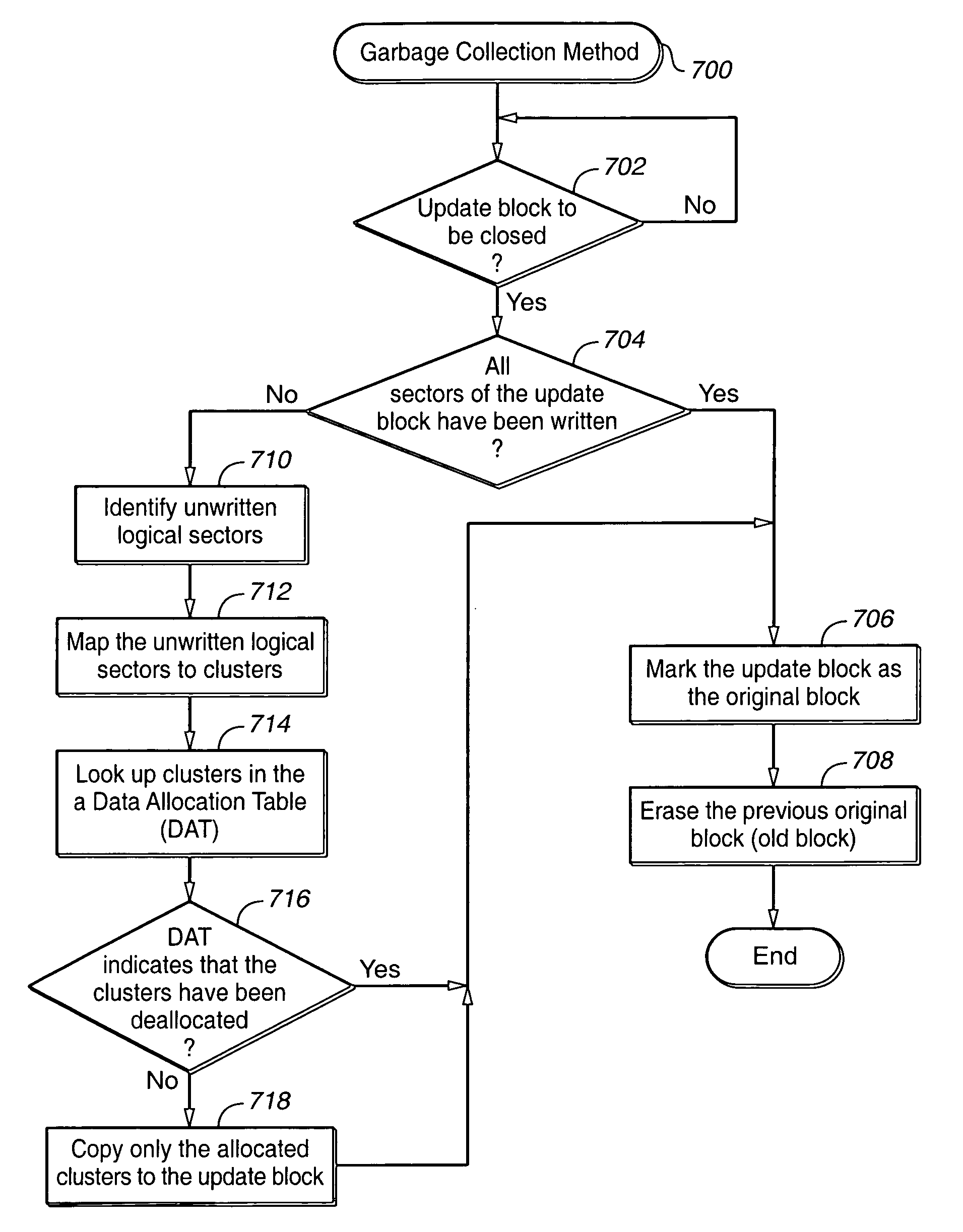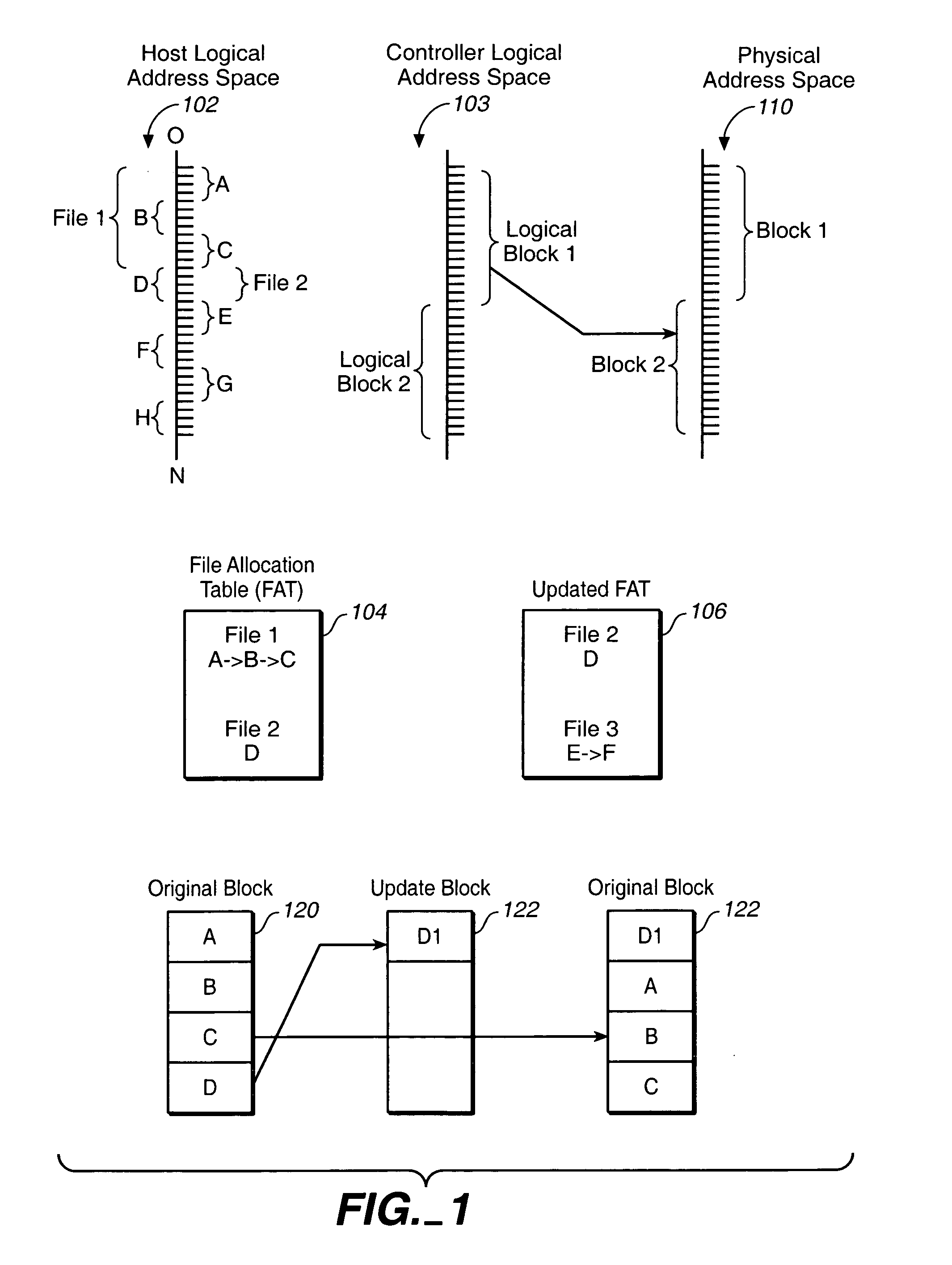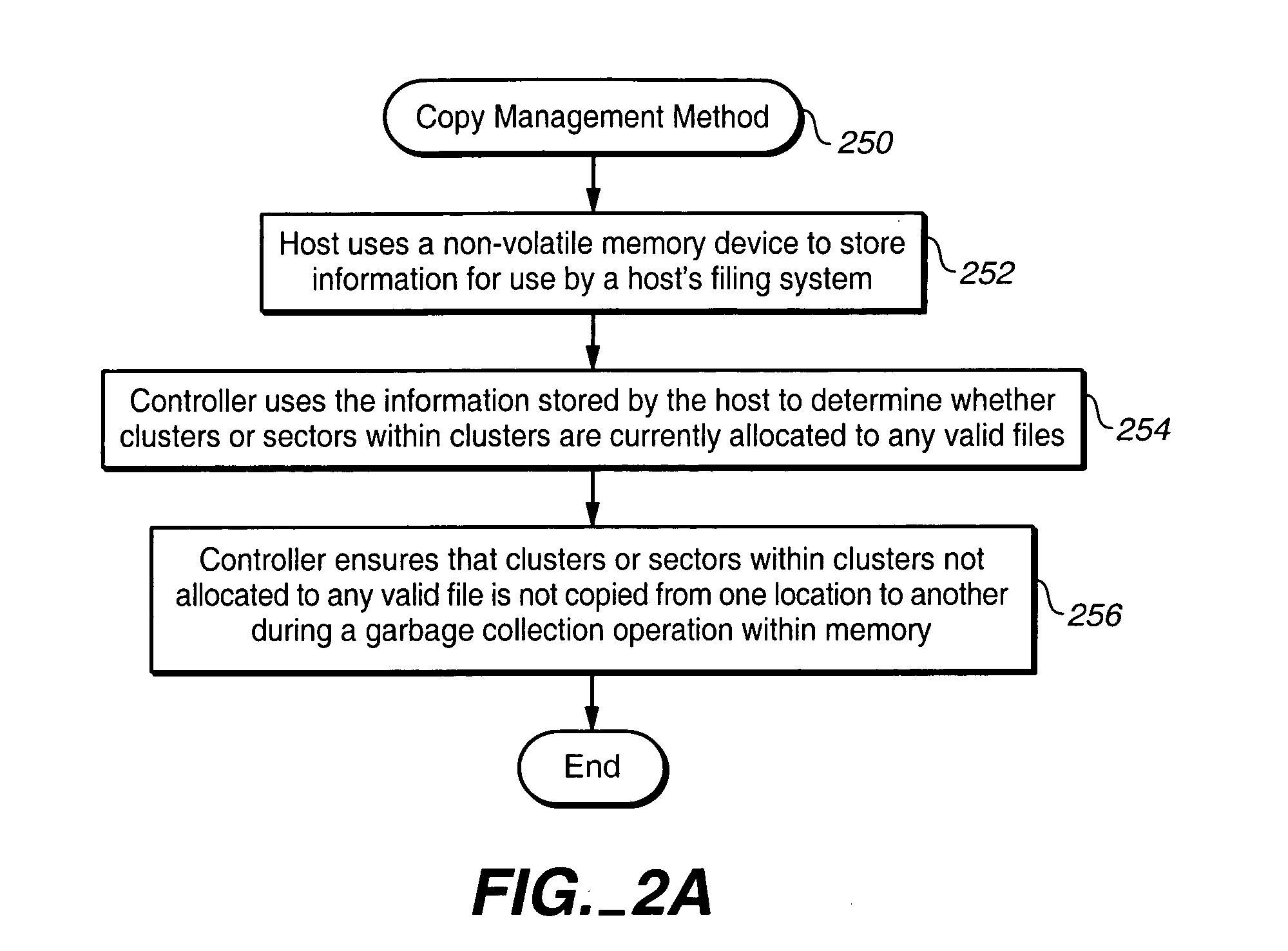[0014] Broadly speaking, the invention pertains to techniques for managing data in a non-volatile memory
system (e.g.,
Flash Memory). In accordance with one aspect of the invention, a controller can use information relating to a host's
file system, which is stored by the host on non-volatile memory, to determine if one or more clusters (or one or more sectors within one or more clusters) are currently allocated. As will be appreciated, the controller can use the information relating to the host's file system, among other things, to ensure that one or more clusters (or one or more sectors) are not copied from one location to another location in the memory, for example, during a
garbage collection cycle. As a result, some unnecessary operations (e.g.,
copying data), which are conventionally performed, can be avoided and system performance is enhanced.
[0015] It will also be appreciated that the controller may directly use the information normally written by the host in a
File Allocation Table (FAT) to determine whether one or more previously allocated clusters have been deallocated. Alternatively, the controller may use the information written in the
root directory, subdirectories, and
File Allocation Table (FAT) to generate and / or maintain its own information about cluster allocation, for example, in a
Data Allocation Table (DAT). However, it should be clear that the invention may be implemented to make use of the information normally stored in the
File Allocation Table (FAT). As such, it is not necessary for the controller to maintain its own information or to generate any additional data structures (e.g.,
Data Allocation Table). However, as will be described below, maintaining a
Data Allocation Table (DAT) may offer more advantages than solely relying on the information obtained from
File Allocation Table (FAT). Therefore, a Data Attribute Store (DAS) which may, for example, be implemented as a Data Allocation Table (DAT) will also be further illustrated.
[0017] In one embodiment, the Data Attribute Store (DAS) is implemented as an Allocation Store (AS). The Allocation Store (AS) can, for example, be implemented as a table, or a Data Allocation Table (DAT) that provides an allocation status for each cluster (host's logical unit) of data. A cluster represents a logical unit that the host uses in order to logically organize data. To achieve better
memory management, a controller of the non-volatile memory system can access the Data Allocation Table (DAT). As such, the Data Allocation Table (DAT) effectively provides a bridge between the logical organization used by the host and the controller. This allows the controller to effectively understand the logical organization of the host. In addition, the controller monitors host activities to determine, for example, whether the host has deallocated a cluster. By way of example,
root directory,
File Allocation Table (FAT), and subdirectories of a DOS compliant system may be monitored to detect deallocation of a cluster of data by the host. A change in the
root directory,
File Allocation Table (FAT) or a subdirectory may be caused, for example, as a result of a file or a portion of the file being deleted by the host. In any case, when deallocation of one or more clusters of data have been detected, the controller updates the Data Allocation Table (DAT). Thus, the Data Allocation Table (DAT) can provide updated information about data. This information can be used to manage data more intelligently. By way of example, a deallocation status can be used to determine whether data should be copied during
garbage collection. Data that has been deallocated need not be copied. As a result, some unnecessary operations, which are conventionally performed, can be avoided and system performance can be enhanced.
 Login to View More
Login to View More  Login to View More
Login to View More 


